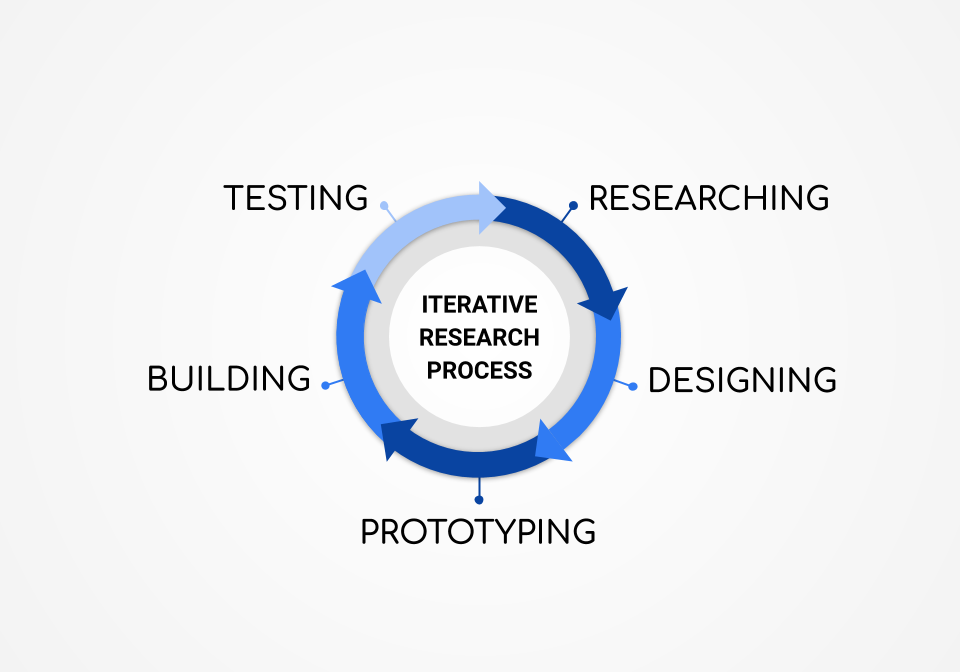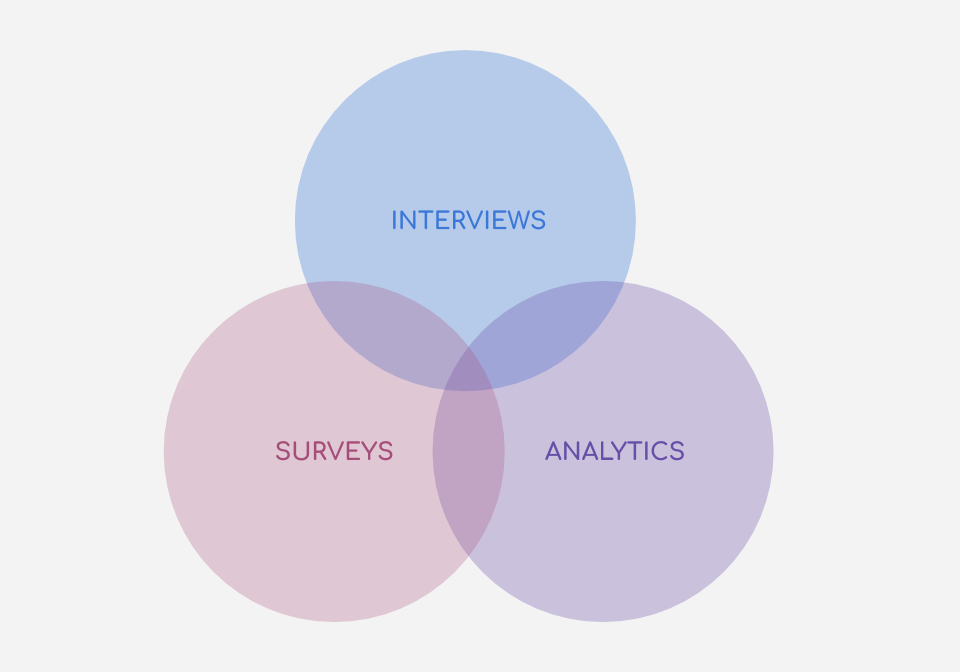


Top 7 Best Practices for Respondent Recruitment in South East Asia

UX Research: A Quick & Easy Guide
It’s vital to undertake user research before the design phase of any project so that proper informed decisions can be made. User research should be the core, it’s critical to the success of any project – whether it’s for an internal project, an external client, or even a new product you’re building – to adopt a user-first or user-centred approach that prioritizes the people that use the product. You may navigate to any topic that interests you by clicking the links below, or just keep reading.
- What is UX research?
- User-Centred Design Needs User Research
- UX Research Methods
- Research Findings Analysis
- How to choose the right user research method?
- In Closing
What is UX research?
User experience (UX) research is a discipline that focuses on understanding different user behaviours, needs, and motivations via observational techniques and feedback mechanisms.
It encompasses different investigative methods to add context and insight to the UX design process.
But, in actuality, UX research is simply translated from other forms of research to learn what end users needs and wants from a product (product could mean a website, mobile app, system etc). It then exploits those insights to influence the design and development process of the product.
UX research takes different forms depending on the area of focus. For instance, for product teams, UX research could involve validating concepts or usability test of prototypes. On the other hand, for marketing teams, it might involve A/B testing content designs before launching products.
Overall, UX research is principally concerned with the human experience to design better tools, processes and procedures. Some of the core goals for UX research are to:
- Advocate for the user.
- Gather user feedback and input.
- Understand user perspectives, motivations, and goals.
- Exploit insights drawn from data in order to guide UX design direction and decision-making.
This means that a UX researcher is a professional who provides actionable and meaningful data-driven insights to improve product definition and drive business goals.
User-Centred Design Needs User Research
Designing effective and memorable user experiences is impossible if your users aren’t placed at the heart of the design process. When embarking on the design process – as you’re framing the problem you’re trying to solve, it’s important to ask:
- What do your users want to get done?
- What are their goals?
- What are they trying to achieve?
- What problems are they facing in trying to achieve their goals?
User research is able to give you the insights into the answer to these questions, it should be one of the first things you focus on and undertake. It is critical to do user research at the beginning, it helps to define the scope of the project and the goal. Great products help enable your users to get things done, as effortlessly as possible. That’s why it’s so important to conduct user research, spend time with your users, getting to know their needs, and what it is they are trying to achieve. If you don’t focus on your users first, you’re in danger of designing and building based on assumptions, which are often incorrect. So instead of beginning with assumptions, begin with user research. Define the problem you’re trying to solve with evidence, build a prototype, test your assumptions and iterate. Research is indeed important to have at the beginning of a project, but it should also be an ongoing process – it’s rarely, if ever finished, it should be integrated throughout the process. Ideally, an iterative approach should be adopted towards your product. 
Looping iteratively throughout this process leads to better results as user feedback shapes user experience. With something built, even a functional prototype, it’s important to test it. Crafting the user experience without user research is simply educated guesswork, which can lead to expensive mistakes that need to be fixed.
UX Research Methods
UX research has two main components: the gathering of data, data analysis and synthesis of the data to gain insights.. Before the start of any project, UX researcher will engage with stakeholders to understand their needs and goals for the end user of their product.
In such cases, UX researchers will come up with an approach such as conducting user interviews, to observe and in-depth understanding of current users, whilst reviewing existing literature, data, or analytics. After that, during the design process, the UX research’s focus typically shifts towards usability and sentiment of the users. Here, the researchers conduct usability tests and generally test user assumptions to improve the designs and reduce usability issues of the product.
There is an abundance of research tools that can be used, and as your experience of user research deepens, you’ll develop the experience in knowing when to use which tool.
Before going into some research methods, it’s important to remember that who you test with is vital. Testing with your colleagues may be more convenient but your findings will very likely be biased or irrelevant compared to your actual target users. When undertaking research, especially qualitative research, it’s essential to find the right kind of people. For example, if you’re designing a product for the elderly, it’s vital to have a panel of users that fit the profile. Select your users with care, they will shape the research findings considerably.
UX research methods are segmented into two main types: quantitative and qualitative.
Quantitative research methods typically rely on targeting large sample sizes to establish clear trends and conclusions with quantifiable data.
On the other hand, qualitative UX research methods aim to get a more in-depth, and contextual understanding of why the trends occur with a smaller samples sizes.
Generally, the two approaches answer different questions. This means you should not substitute one for the other to get a complete picture of the user experience.
1. Qualitative Research
Qualitative research is mainly exploratory research, used to gain understanding in pain points, reasons, opinions and motivations. It helps provide insights into the problem, aiding in developing ideas and solutions.
Qualitative research methods tend to be unstructured and subjective, usually done with a small sample size, with a degree of facilitation. This research method is best used to gather data on user behaviour and attitudes directly.
Following are some commonly deployed qualitative research methods.
1.1 Contextual Inquiries
Contextual inquiry is a type of ethnographic interview, where the users are observed and interviewed in their own environment to determine their approach towards specific tasks. Contextual inquiry is focused around four key principles:
- Context: Interviews are conducted in the user’s workplace, which provides an opportunity to experience their typical working conditions, existing solutions and their frustrations.
- Partnership: Where the user and researcher work together in understanding the user’s workflow, including any existing tools or products they use.
- Interpretation: By sharing the researcher’s insights and observation with the user, it creates an opportunity for the user to clarify or build on the researcher’s findings.
- Focus: The researcher is present and able to guide the user’s interactions towards areas that are relevant to the project’s scope.
Adopting this approach is beneficial because users are observed and questioned in their own workplace. A contextual inquiry provides a rare opportunity to have a realistic view of the users’ needs and frustrations in a day-to-day context.
1.2 User Interviews
User interviews are an excellent way to really understand your users’ needs if the researcher is able to effectively facilitate interviews. A good interviewer requires empathy, social skills and a sense of self-awareness.
It’s important that your interviewees are at ease, they need to feel comfortable sharing their thoughts and opinions. Bonus points if the researcher is able to build a rapport with them as they’ll open up and be even more honest.
User interviews can be conducted either remotely employing a virtual meeting tool, or in person.
One key benefit of user interviews is that you not only learn from your interviewees’ answers but by observing their body language as well. Interviews fall into two categories:
- Structured Interviews: The researcher or interviewer uses a set of structured questions, not straying from the script.
- Semi-Structured Interviews: The researcher or interviewer adopts a looser, discussion-driven approach to allow the interview to evolve naturally.
Reality is, user interviews are organic by nature. Even with a set structure of questions, it’s important to allow some breathing room for the interview to evolve naturally and organically.
With that in mind, put some thought into your questions in advance and allow the interviewee the room to move into areas, even if it’s something unforeseen. User interviews are a great user research method to challenge your assumptions, make unexpected discoveries and things you were perhaps unaware of.
Tip: Again, it’s important that the interviewee feels at ease so they are comfortable in answering your questions. To facilitate this, it’s good to have a note-taker, preferably discreetly, to allow the interview to fully focus on the interviewee.
1.3 Card Sorting
Card sorting is a useful user research method in establishing information architecture (IA). For example, designing the navigation menu of your website or app. Card sorting is a process of deciding what goes where, creating information groupings and ensuring that it makes sense to the widest possible audience.
Card sorting involves writing phrases or words onto cards separately, taking care to shuffle the cards before each session to avoid bias, and then asking your users to organize them into logical groupings.
This method of user research is considerably cheap, and it can also be a helpful way to build consensus amongst stakeholders by asking them -as a team- to define groupings.
In addition, by asking your users to name their groupings, alternative navigation labels are discovered and explored.
Although card sorting exercises can be done online, there are valuable insights that can be derived from observing and listening to your users’ debate groupings to understand how users see logical groupings.
There are two key types of card sorts approaches:
- Open card sorting: Here, users place specific items in groups, then name the groups.
- Closed card sorting: Here, users place items into predefined categories.
1.4 Usability Testing
Usability testing is a highly recommended UX research method, commonly used by UX practitioners and usability professionals to evaluate the usability of a product by testing it out with real users.
Usability testing can be done in-person or remotely, is a great way of seeing how your users actually use your product.
In a usability testing session, the user is asked to perform a series of tasks and to speak aloud their thoughts, and whilst the user is trying to complete each task, the researcher observes the user’s behaviour and listens to their feedback and opinions.
Bonus points of having an in-person usability testing is the ability to observe the user’s body language and nonverbal cues for more insights.
Usability tests can be conducted using a live version of a website, a prototype , clickable wireframes or even paper and pencil.
Prototype testing primarily constitutes the sharing of prototypes or wireframes with research study participants for them to view on their desktop/mobile devices. This approach is employed when assessing the viability of a product design early in the development process to leave room for iterative changes.
Prototypes can range from static images to fully-functional test websites. They are typically shared via a shareable private link from a prototyping program. And in some instances, participants are asked to think aloud as they complete the activity.
There are incalculable benefits of this user research method. Through usability testing, problems in the product are identified, opportunities for improvement are also uncovered, as well as valuable insights to the users’ behaviours and preferences.
As mentioned above, usability testing can be done in-person or remotely, in-person usability testing provides more insights and a more in-depth study whereas remote usability testing allows you to access a wide range of audience.
Click on this article to know more about Usability Testing.
1.5 Field Studies
With field studies, UX Researchers study participants within their own environment. For example, work or home. In essence, anywhere the users would most likely encounter the product being used in their most realistic or natural environment.
1.6 Diary Studies
Diary studies involve participants using mechanisms like paper or digital diaries, or smartphone apps to record and describe aspects of their lives relevant to a product.
They are usually a longitudinal study and the task can be performed easily by the participants to record for data.
1.7 Focus Group Discussions / User Workshop
Focus group discussions are essentially moderated discussions with a specific group of users to gain insight into their attitudes, ideas, and desires.
Typically, groups of 3-10 participants are engaged in a discussion about a set of given topics. In turn, they provide verbal and written feedback throughout the discussion and exercise.
UX researchers collect multiple viewpoints (thoughts and feelings) and user reactions to inform the product direction and create a more well-rounded product that appeals to a larger audience.
Generally, focus groups are mainly useful during the early stages of new product development.
1.8 User persona Creation
User personas are fictional representations of a user base derived from available data and user interviews. These help UX designers to understand their target audience and create better tailor products for specific user groups.
1.9 Tree Testing
Tree testing is a qualitative research method that involves the evaluation of the findability of topics within a site or app.
Here, users are typically shown a text version of the website or app information architecture or structure.
Subsequently, they are then asked to indicate where they would expect to find particular items or topics. All this occurs without the influence of the visual design of the product’s navigation.
1.10 Heuristic evaluation / UX audit
Heuristic evaluation is a qualitative process that involves usability specialist using rules of thumb to measure the usability of products via independent walkthroughs to report any issues.
Unlike user-testing, where the prototype is evaluated by users, heuristic evaluation’s employment of usability experts reveals deeper insights to help design teams improve product usability in the early development stages. This method could be time saving and more cost efficient.
2. Quantitative Research
Quantitative research is mainly to test assumptions, it’s useful in shaping thoughts and establishing ideas, which can then be built and tested using quantitative research methods.
Quantitative research methods are largely structured, tend to be objective and are about testing theories or assumptions.
Compared with qualitative research which is usually done with a small sample size, quantitative research tends to be large sample sizes. This user research method is best used to gather data on user behaviour and attitudes indirectly.
Following are some frequently used quantitative research methods:
2.1 A/B Testing
A/B testing is useful in testing out multiple ideas to see which works best. It’s essentially a controlled experiment with two variants, A and B, providing a direct comparison allowing you to test different designs effectively against each other.
The two variants, which are more often than not identical apart from a single variation that may affect the user’s behaviour. This method is useful when testing assumptions informed by qualitative findings.
Multivariate A/B testing is a variation of A/B testing that involves testing three or more variables at once whereas A/B testing is testing on one variable at a time. Overall, A/B and multivariate testing are recommended when there is a need to gauge performance between different designs
For instance, when employing a different ‘call to action’ for each design approach.With A/B testing that focuses on only one element/variable that has been changed and everything else stays the same. This enables researchers to draw strong conclusions about why one design outperformed the other.
A/B testing doesn’t have to be just visual design, it can focus on language too. In an A/B testing conducted by unbounce, they compared two call to action (CTA) buttons with different variants of copy:
- Start your free 30 day trial
- Start my free 30 day trial
Only one word was tweaked in the copy, and after running the test for three weeks, the click-through rate (CTR) of ‘Start my free 30 trial’ increased by 90%. This method of user research is best done in large sample size where there’s more reliability in your data when your findings are backed by a substantial quantity of data.
2.2 Surveys and Questionnaires
Surveys and questionnaires are powerful in gathering high volumes of opinions. They are conducted in a more hands-off manner, however, it doesn’t mean they are not useful, but try to focus on interviews first if it’s possible.
There is generally a lack of interaction between the interviewer and interviewees in this user research method, especially if it’s done remotely. As such, it is difficult to gain valuable insights compared to working directly with your users and observing them.
It helps to incentivize surveys, because you need to try to motivate as many users as possible to participate. It’s important to design your survey well, this means spending time on the questions and distilling them down. It’s better to ask fewer questions and increase the chance of completion than to have many, often irrelevant questions and lose participation.
This also includes making sure the survey is beautifully designed, and for it to be easily completed to improve completion rates.
2.3 Digital Analytics
Technology allows us the convenience of having considerable amounts of data at our fingertips, digital analytics allows website traffic to be measured with reports generated easily and quickly.
Software such as Google Analytics and Adobe Analytics is used to track website/app traffic flow of visitors.
Drawn from data, digital analytics can be a very persuasive tool when working with stakeholders who prefer to see things in ‘black and white’
By having access to numbers of unique visitors, page views, pages per visit and other various metrics allows the ability to test your thinking once you’ve implemented your design after conducting some qualitative research.
2.4 First Click Testing
Click testing is a user research approach that focuses on website navigation.
The goal of this approach is to determine where users tend to navigate first to, when given a specific scenario. This helps designers evaluate if their navigation design approach supports the users’ expectations.
2.5 Website Intercepts
Website interceptors aim to collect users’ feedback and ratings when they’re browsing a website. Or as they are leaving a website, a pop up will be shown to survey their usage satisfaction rating
Tips and Techniques for UX Research
-
- Screeners are helpful in screening potential users before undertaking user research. Conducting tests with the wrong people will result in time and effort lost.
- When developing questions, it’s important to consider both qualitative and quantitative questions, this applies to both interview questions, and surveys and questionnaires. Both types of questions are important: qualitative questions are open-ended whereas quantitative questions are closed-ended.
- Be wary of herd mentality when conducting research with groups, an opinionated user could influence the group. It may be better to conduct one-to-one research like interviews.
When it comes to choosing user research methods, it’s important to use both qualitative and quantitative methods hand-in-hand. Qualitative research leads to insights, quantitative methods allows you to test those insights.
Research Findings Analysis
If you do not take time to analyze your findings, then you will be missing the biggest benefit of undertaking the user research in the first place. It’s beneficial to triangulate your findings, looking for patterns and correlation. The aim is to see if any findings are confirmed by the other different research methods so you can implement these verified findings. 
Triangulation is the process of using multiple research from multiple methods to increase confidence in your research and assumptions. The more data points, the more confident we can be in our assumptions, this can be done by looking for points of overlap in the different user research methods used.
Different research methods have their own different strengths, and different users respond in their own ways, offering differing opinions. Endeavour to have a mixture of various research methods and different test subjects, this will help in making sure all the bases are covered.
Fret not if you’re only able to conduct one type of test instead of three, the findings of one research method should be enough to point you in the right direction. The main benefit of doing more than one test is to validate and support your findings across various research methods.
How to choose the right user research method?
In summary, the central goal of UX research is to inform the design process from the end user’s perspective.
UX research tells us who exactly a user is, and in what context they will use a product or service.
As such, choosing the right research methodology involves knowing the problem you’re trying to solve and the type of data you need to collect. To go about this, it’s important to know what decision you are trying to make based on the insights from your UX research?
By this token, the most optimal UX research approach will provide relevant and complete answers to your research questions, like:
- “What do my users need when they are filling up our application form?”
- “How can I help my users before they make a decision to purchase our product?”
Besides answering these questions, the right research method must take into account the project timeline, budget, and the amount of data synthesis required to achieve the project goals.
In Closing
Design should be informed and shaped by user needs, and user research is vital towards understanding these needs in improving user experience. The aim is to make informed design decisions and process from the perspective of users, not from our assumptions. Seeing through the users’ eyes is the surest and best path in delivering a better user experience, and user research is how we find that path. When it comes to analyzing research data, it’s important to use a mixture of research methods to ensure your findings are informed and grounded from a variety of perspectives.

7 Tips to Avoid a Lousy Remote Moderated UX Testing

